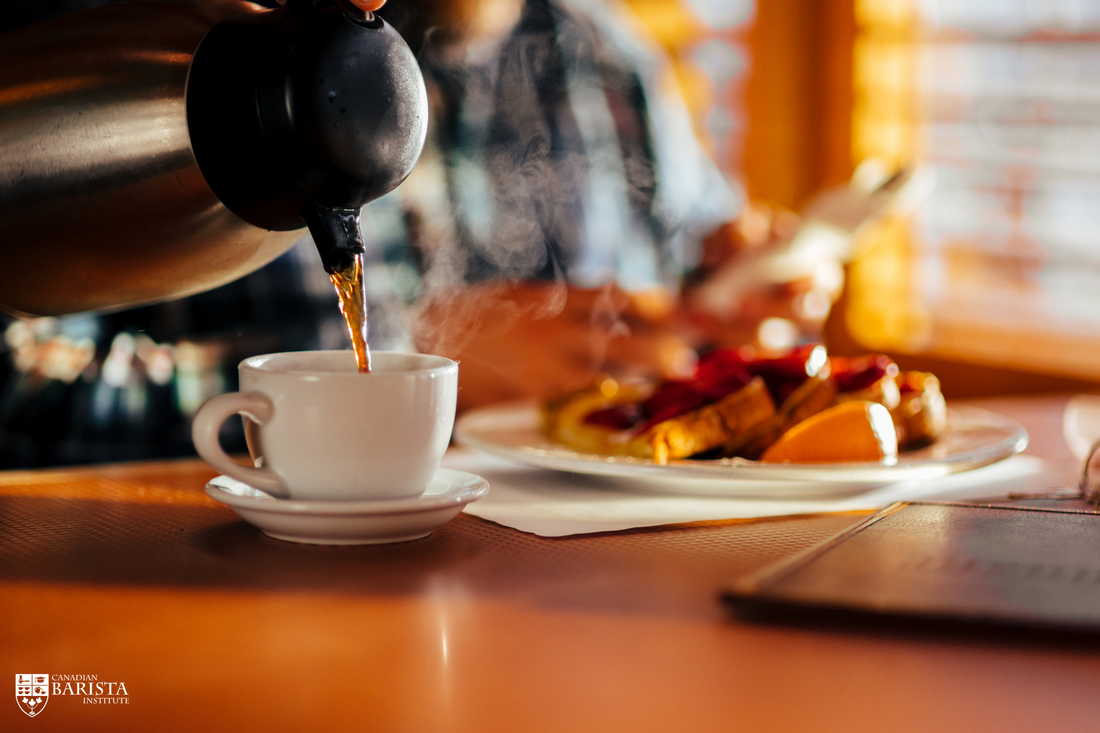Espresso Essentials for Foodservice
Canadians' enthusiasm for espresso beverages is growing. Espresso and espresso-based drinks once only popular in ethnic centers, have now become a staple wherever coffee is sold. The number of Canadians consuming one of these specialty beverages daily, has grown four-fold since 1999 and 54 per cent of Canadians are now occasional drinkers, according to the latest Canadian Coffee Drinking Study conducted for the Coffee Association of Canada.
The majority of espresso beverages consumed out of home are being purchased in specialty coffee bars, cafes and quick service restaurants. This represents a significant increase in dollar value for coffee in these venues.
Dining establishments are also waking up to demands for espresso drinks from a more quality conscious consumer. "Specialty Coffee" beverages are now the 7th most popular beverage item ordered in foodservice and cappuccino and lattes are the fastest growing item for an afternoon or evening snack, according to the Canadian Restaurant and Foodservice Association’s Foodservice Facts 2007.
With this new popularity, will restaurant staff dare make and serve cappuccinos? Or will they just use the convenient excuse of, "Our machine is out of service".
Restaurants spend thousands of dollars on espresso machines but rarely achieve good returns on their investment because the staff are not using the equipment properly. Too many see training as a cost not an investment.
Restaurants should be treating coffee as they would fine wines and ensuring that every cup of coffee served is a good one. This means investing in quality products and the execution of the product.
"Espresso training often gets overlooked in restaurants which often shows up as a poor cup of brew," says Les Kuan, Director of Curriculum, Industry Consultant and Founder of the Canadian Barista Institute. "In a busy full service restaurant, time constraints and high staff turnover make it difficult to make espresso training a priority".
"The biggest problem however, is that ownership or management rarely takes active interest in the coffee program. If the chef displays only a casual interest in coffee, it is very likely that the staff will follow his lead.", says Kuan.
In Italy, the job of "Barista" is considered a career much like a chef or a sommelier. Trained staff or an experienced barista at the controls ensures consistent quality and creates an environment where espresso takes an important place on the menu and sets the restaurant apart from the rest. In North American restaurants, the barista is conspicuously absent, even in the finest establishments.
As a result, many restaurants opt for superautomatic machines – systems that grind, dose, tamp at the push of a button, for ease of use and quality control. This makes sense where there is a lot of staff turnover. However, even the most automatic machines still need a dedicated individual to clean, monitor and control the quality of espresso beverages. The machine won't do everything.
"The restaurant trade has traditionally been price sensitive in their coffee selections often sacrificing quality or looking for free equipment from their roaster suppliers”, says Aaron De Lazzer, industry consultant based in Vancouver. "There has been very little interest in coffee education or elevating espresso to the levels or methods of selecting, serving and promoting wines.”
"Restaurants may publicly state that they are all about the quality of their coffee, but the reality is, most restaurants are much more concerned whether or not their coffee company can give them a shiny new grinder or brewer. Restaurants are better off just getting rid of the espresso machine, rather than serve half-hearted, poorly executed coffee drinks. Just tell your customers to go to a cafe and have their espresso, or cappuccino- some place where they won't be disappointed" says an emphatic De Lazzer.
If a restaurant is serious about its coffee quality, they have to invest in training staff. Restaurants today are all about educating their servers about cuisine and the culinary arts. A server cannot be effective if he or she does not understand what a confit or genoise is. Yet, restaurants routinely send their service staff to upsell specialty coffee drinks with very poor product knowledge.
The servers need to understand coffee, so they can speak intelligently about the coffee as they try to upsell. How is coffee roasted? Is it single Origin or what is in the blend? Are the beans arabica or robusta? What is the difference? What are the flavor characteristics of the varietals? What kind of decaffeination process do you use? What aromas and taste characteristics are indicative of this coffee?
Proper training also includes tasting, diagnosing extraction problems, machine maintenance, storage and care of beans. Other topics such as drink proportions, types of drinks, station layout, tools, accessories, and water filtration must be considered . Finally there is the actual physical training in basic espresso skills, grinding, dosing, distributing, extracting, texturing milk, waste management, and drink presentation.
De Lazzer believes “espresso education should start with chefs at culinary institutions”. The key to quality is mastering the fundamentals and having formal tastings approaching it as a sommelier course. Today's chef must be part sommelier, horticulturist, nutritionist, environmentalist, molecular gastronomist... Why not part barista? Is it too much to ask, that foodservice professionals should be knowledgeable about the coffee they sell?
Too often, restaurants and cafes fall into a false sense of security, believing that if they obtain the proper espresso blend and machine, everything else will fall into place. This is as silly as saying that you don't need a well-trained chef if you just supply him with foie gras, kobe beef and a sous vide circulator bath.
Having well-trained, talented baristas has been an advantage to many cafes in a very competitive market. It serves to help ensure the coffee is up to expectations – particularly the customers. “Employers who take the initiative and put their employees through the training, generally see the payoff," says Kuan.. Once they acquire the knowledge, they convey it with confidence to the consumer which will ultimately help maximize coffee volume and profitability.
"If they are passionate, they will sell more coffee." Hire staff with a love for good coffee and a desire to learn, but management must be behind their efforts to improve.
Espresso checklist:
Here is a list of questions designed to evaluate the state of your espresso program. A restaurant with a professional espresso approach, will have answers to most of these questions.
- Who is in charge of making the espresso?
- Who maintains quality control?
- Is everyone allowed to make drinks for customers?
- Is this how your kitchen or bar works?
- Is your equipment operating correctly?
- How do you tell?
- What should the pump pressure be?
- What should the water level be?
- What about the steam pressure?
- Who cleans and maintains the espresso machine and grinder?
- Which parts need to be cleaned?
- Which parts shouldn't be cleaned?
- Is cleaning done on a nightly basis?
- Is there a cleaning checklist?
- Is your water treated or filtered?
- How often are the filters or cartridges changed?
- Who checks it?
- When was it last done?
- What temperature are you brewing at?
- What is correct?
- How many grams are you using per shot of espresso?
- What volume are you pouring for a single shot of espresso?
- How long should it take to pour a single shot?
- What proportion of milk to espresso are you using for cappuccinos?
- For lattes?
- What kind of milk are you using?
- What percentage of butterfat?
- Which is best?
- What kind of espresso beans are you using?
- Is it a blend?
- Is it arabica?
- Robusta?
- Single origin?
- Are they organic, dry processed, wet processed, pulp natural, honey etc.?
- Is the roast light, dark? Full city? just beyond the second crack? Northern Italian style, Southern Italian? How do you tell?
- Does anyone check the beans for consistency?
- When were your coffee beans roasted?
- When do they go stale?
- Do you know how rancid coffee tastes or smells?
- How are they stored?
- How often do you order to ensure you aren't holding too much staling coffee in inventory.
- Do any of your staff know how to adjust the grinder?
- Does anyone understand the parameters to ensure the grind is correct?
- How many times per day is the grind adjusted?
- When was the last time the grinder was cleaned?
- When was the last time the grinder burrs were changed?
- How long do they last?
- Are you grinding just enough coffee for a single order, or grinding a batch beforehand?
- Why does ground coffee stale quicker?
- Do you have a properly fitted espresso tamper?
- Does your staff understand the difference between frothed milk and properly textured, steamed milk?
- Do you have the correct pitchers?
- What temperature are you steaming the milk to?
- Are you resteaming old milk, or always steaming just enough fresh milk to make one drink?
- Do you have the correct cups, or are you serving champagne in brandy glasses?



